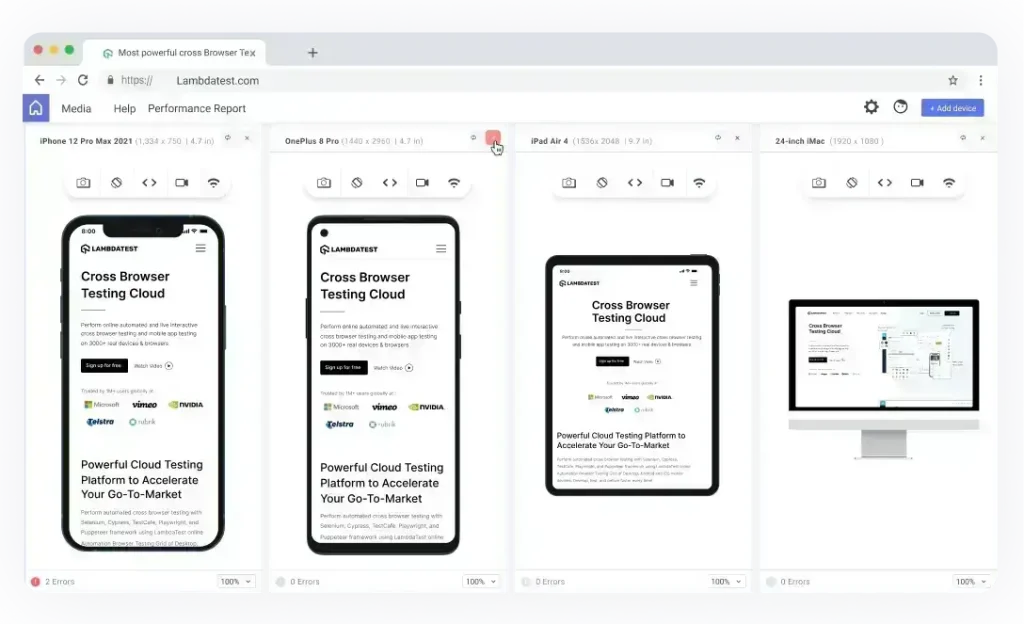Did you know that over 60% of all web traffic comes from mobile devices? In a world where smartphones are practically glued to our hands, the significance of mobile optimization cannot be overstated. Whether you’re a small business owner, a digital marketer, or a website developer, understanding why mobile optimization is crucial can propel your site to new heights. With a significant chunk of web traffic originating from mobile devices, tailoring your website to meet mobile usage is no longer optional—it’s a necessity. This blog will unveil why mobile optimization is indispensable, offering insights and actionable tips to ensure your website is both user-friendly and SEO-optimized.
The Rise of Mobile Usage
Mobile devices have transformed the way we browse the internet, with their usage skyrocketing over the past decade. According to recent statistics, mobile devices account for over half of all global web traffic. This trend is not just limited to browsing. Online shopping via mobile has also seen a massive surge, reshaping user behavior. Consumers now demand seamless experiences across their devices, making it clear that mobile optimization is a must for any website aspiring to thrive in this digital era.
The numbers tell a compelling story. Data shows that users are increasingly turning to their phones for tasks they once performed on desktops. Whether it’s reading articles, shopping, or connecting on social media, the shift to mobile devices is undeniable. Businesses that adapt to this trend can tap into a broader audience and enhance user engagement.
Furthermore, mobile-first browsing has altered user expectations. In today’s fast-paced world, users expect websites to load quickly and be easy to navigate, regardless of the device. Meeting these expectations through mobile optimization can significantly improve user satisfaction and retention, ultimately benefiting your bottom line.
How Mobile Optimization Improves User Experience (UX)
A mobile-optimized website significantly enhances the user experience by offering seamless navigation and fast-loading pages. Responsive design plays a pivotal role in ensuring your site adapts to different screen sizes, providing a consistent experience across devices. This not only improves user satisfaction, but also boosts retention rates, translating into long-term engagement.
Responsive design is the backbone of mobile optimization. It ensures your site automatically adjusts its layout based on the screen size, be it a smartphone or a tablet. This flexibility is vital in maintaining a professional appearance and usability across all devices, preventing users from abandoning your site due to frustrating navigation.

Fast loading times are another critical aspect of UX. Mobile users are often on-the-go and expect instant access to information. A delay of even a few seconds can lead to higher bounce rates, as users swiftly move to faster alternatives. By optimizing your mobile site for speed, you can retain users and encourage them to explore further, increasing the likelihood of conversions.
SEO Benefits of Mobile Optimization
Mobile optimization isn’t just about catering to user preferences; it also plays a crucial role in enhancing your site’s search engine optimization (SEO). Google’s mobile-first indexing means that the search engine primarily uses the mobile version of a site for ranking and indexing. This makes having a mobile-friendly site essential for achieving top search rankings.
The shift towards mobile-first indexing marks a significant change in how Google evaluates websites. If your site isn’t mobile-friendly, it could face penalties that negatively impact its search engine visibility. Ensuring your site is optimized for mobile is no longer optional; it’s a vital component of your SEO strategy.
Additionally, a mobile-friendly website improves user engagement metrics like time spent on site and bounce rates, which are factors Google considers in its ranking algorithm. By optimizing for mobile, you not only enhance user experience but also improve your chances of ranking higher in search results, driving more organic traffic to your site.
Increased Engagement and Conversions
Mobile optimization directly influences engagement and conversions. A well-optimized site encourages users to interact with your content, leading to higher engagement rates. For e-commerce sites, mobile optimization is especially crucial, as it can significantly boost sales by providing a smooth and efficient shopping experience.
Engagement is key to building lasting relationships with your audience. Mobile optimization ensures that users can easily access and engage with your content, whether they’re reading a blog post, watching a video, or completing a form. By facilitating interaction, you can increase user satisfaction and encourage repeat visits.
Conversions are where mobile optimization truly shines. With mobile commerce sales projected to account for a substantial portion of total e-commerce sales, ensuring your site is mobile-friendly is imperative. A seamless mobile shopping experience reduces friction, making it easier for users to purchase, ultimately driving revenue growth.
Competitive Advantage
In today’s competitive digital landscape, mobile optimization can give your business a distinct edge. Companies that prioritize mobile experiences are better positioned to capture and retain customers, setting themselves apart from competitors who overlook the importance of mobile optimization.
Consider successful businesses like Amazon, which have mastered mobile optimization. Their sites offer smooth navigation and fast loading times, creating a user experience that keeps customers returning. By following suit, you can differentiate your brand and foster loyalty among your audience.
Staying ahead of the competition requires vigilance and adaptability. By continually optimizing your mobile experience, you ensure your site meets evolving user expectations, keeping your brand relevant and top-of-mind in a crowded market.
Key Elements of Effective Mobile Optimization
Effective mobile optimization encompasses several critical elements that work together to create a seamless user experience. These include responsive design, fast loading speeds, optimized images, and touch-friendly buttons, among others.
Responsive design is foundational, ensuring your site’s layout adapts to different screen sizes. Fast loading speeds are equally important, as slow pages can deter users. Optimized images and touch-friendly buttons enhance usability, making it easier for users to interact with your site.
Additionally, consider implementing mobile-friendly pop-ups and forms. These elements can enhance user experience without being intrusive, encouraging interactions without disrupting the flow. Avoid common mistakes like cluttered layouts and excessive pop-ups, which can frustrate users and detract from the mobile experience.
Tools and Techniques for Mobile Optimization
To achieve effective mobile optimization, leverage tools like Google PageSpeed Insights and Lighthouse, which provide valuable insights into your site’s performance. Plugins like WP Rocket can improve loading speeds, while CDNs (Content Delivery Networks) enhance content delivery.
AMP (Accelerated Mobile Pages) is another powerful tool, offering a framework to create high-performing web pages. By implementing AMP, you can improve your site’s loading times and overall performance, enhancing the mobile user experience.
Experiment with these tools and techniques to identify what works best for your site. Regularly monitor your site’s performance and make adjustments as needed to ensure optimal mobile functionality.
Real-World Examples of Successful Mobile Optimization
Real-world examples of successful mobile optimization demonstrate the tangible benefits of prioritizing mobile experiences. Companies like Airbnb and Starbucks have implemented mobile optimization strategies that resulted in increased traffic, conversions, and revenue.
Airbnb’s mobile app offers a seamless booking experience, with responsive design and intuitive navigation. This has led to higher user engagement and increased bookings, showcasing the power of mobile optimization in driving business success.
Similarly, Starbucks’ mobile app enhances customer convenience by allowing users to order and pay via their phones. This integration of mobile optimization into their digital strategy has contributed to increased sales and customer loyalty, underscoring the impact of prioritizing mobile experiences.
Conclusion
Mobile optimization is more than a trend; it’s a necessity for businesses aiming to succeed in the digital age. By optimizing your site for mobile, you unlock numerous benefits, from improved user experience to enhanced SEO and increased conversions.
Prioritizing mobile optimization in your digital strategy ensures your business remains competitive and relevant, catering to the needs of today’s mobile-savvy consumers. Take action today by conducting a mobile performance audit or exploring the tools mentioned in this blog to optimize your website for mobile.
In closing, I invite you to explore further resources, conduct a mobile audit, or even consult with experts to ensure your website is fully optimized for mobile users. By doing so, you’ll position your brand for success in an increasingly mobile-driven world.
